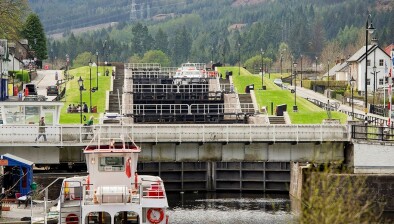Sally Reynolds: Community benefits and net zero – the time is now

Sally Reynolds
Scottish Land Commissioner Sally Reynolds explores the importance of realising community benefits when setting out the relationship between nature finance and communities in Scotland’s just transition to net zero.
To achieve our net zero ambitions, the way we’re using land in Scotland is changing – and quickly.
Although many people will agree that change is needed, it is not always clear who benefits from that change. With corporations and institutions entering the land market to seek a financial return from nature, and land-use decisions for carbon markets being locked-in for up to 100 years, there are fundamental concerns about the implications of nature finance that need to be addressed. We shared some of these last year and have more work on this to come.
One area for concern is the relationship between nature finance and communities. It is fundamental to a just transition that those living in local communities can influence and benefit from nature finance, receiving a fair and genuine share of the benefits, and sharing in decision-making about the land around them.
There are many questions still to be explored, but the concept of community benefits is one area we have been considering in detail over the last year. But what do we mean by community benefits and what should they look like?
There are a number of landowners, investors and communities exploring this question right now. Our Good Practice Team have been providing thoughtful advice and guidance to several organisations, some of whom are working with us in-depth to determine exactly how they will deliver community benefits from natural capital investments.
Complementing this real-life work, we recently invited responses to a discussion paper on community benefits, as a step to agreeing what this should look like in Scotland and how it can be delivered. This is a key question both for investors who want to understand what is expected of them, and for communities, who want to know what they can expect.
It was immediately clear from the responses to that paper that local communities should expect benefits from investment in natural capital, over and above any public or wider social benefits. Whilst questions and challenges were raised on different points made by the discussion paper, there was also good consensus on key points about how community benefits should be approached and what should they look like.
Firstly, it was agreed that community benefits are for communities of place and should be focused on supporting the sustainable social and economic development of the geographical community local to the natural capital project. Of course, if you ask a community to describe what sustainable development looks like to them, you’ll get a different answer each time, because every community and every place is different.
That leads to an obvious second point – community benefits need to be aligned with the needs and aspirations of a community, and the only way to do that is by agreeing what the benefits will be with the actual community.
Community benefits are not a ‘one size fits all’ approach, they should be tailored to each individual project and should be rooted in quality local engagement. It’s particularly important not to confuse community benefits with wider public or social benefits, which are those that benefit a wider or national group, such as cleaner air or increased biodiversity.
It was also clear from responses that community benefits can be financial – as is the expectation with wind farms, for example – but that there is potentially a better return for communities when the land is holistically and deliberately managed to meet community needs and aspirations, and this can often bring mutual benefits for the community and landowner or investor. This could include transfer of ownership of part or all of the land, joint ventures to use land surplus to nature investments (e.g. affordable housing, allotments) and generating quality year-round jobs. Imagination is the only limitation here, innovation is key and we encourage people to be bold and ambitious in considering community benefits.
Alongside our work to understand the right approach to community benefits in Scotland – and how we embed them in policy and practice – we also need to acknowledge and tackle wider concerns and questions about the concept and implications of nature finance. Rightly, questions are being raised about the fundamental justness of monetising nature, and we will be considering further the implications of this for our systems of land ownership and tenure. Carbon markets are happening in Scotland and further ways of monetising nature are very likely. How do we utilise this opportunity to tackle issues of power and control in our land systems and support the delivery of our national outcomes in Scotland, including community ownership?
We will be publishing a suite of guidance and resources for investors on community benefits later this year – starting with a definition and expectations of community benefits – and addressing those tricky questions over the coming year, starting with a policy paper in May.

















